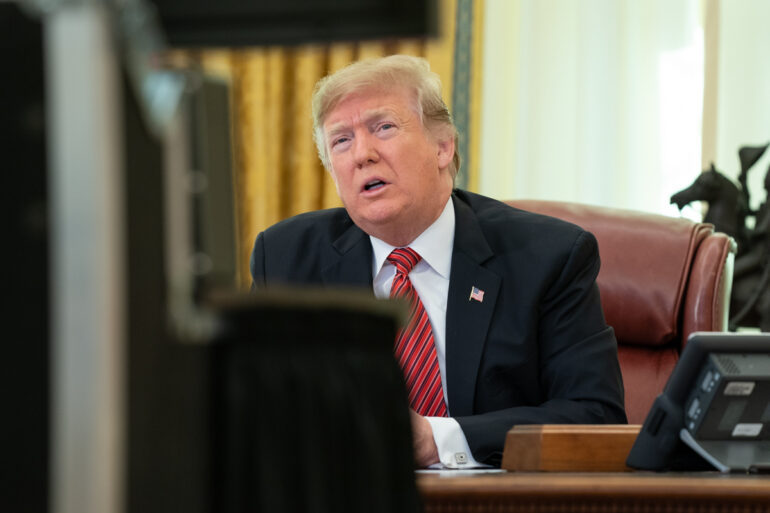President Donald Trump is now reportedly poised to announce that the United States will officially rename the Persian Gulf as the Arabian Gulf during his upcoming trip to Saudi Arabia.
This significant decision, reportedly communicated by unnamed U.S. officials, comes at a time of heightened tensions with Iran, reflecting a shift in diplomatic language that aligns with the preferences of Gulf Arab nations.
The term “Persian Gulf” has been the traditional name for the body of water since the 16th century, but various Gulf Arab states, including Saudi Arabia, Qatar, and the United Arab Emirates, have sought to replace it with “Arabian Gulf.”
This push stems from a desire to emphasize Arab heritage and identity in the region, distancing itself from Persian influence.
While the U.S. National Geospatial-Intelligence Agency typically uses “Persian Gulf” as the conventional designation, it does recognize “Arabian Gulf” and “Persian-Arabian Gulf” as alternative names.
Interestingly, the U.S. military has frequently referred to the Persian Gulf as the Arabian Gulf in its official statements and images, indicating a longstanding informal acceptance of the name change.
This announcement is part of a broader strategy by the Trump administration to strengthen ties with Gulf Arab allies, particularly as Iran has continued to exert influence in the region.
In recent months, Trump has issued fierce warnings to Iran regarding its nuclear ambitions and its support for Houthi rebels in Yemen, threatening severe consequences if Iran does not comply with U.S. demands.
His administration has maintained a hardline stance, asserting that failure to address these issues could lead to dire repercussions.
The renaming of the Persian Gulf to the Arabian Gulf is not merely a matter of nomenclature; it symbolizes a deeper political alignment with Arab states that view Iran as a significant threat.
This shift could also underscore U.S. support for Gulf nations as they navigate their own security challenges amid regional instability.
In January, shortly after taking office, Trump controversially renamed the Gulf of Mexico to the Gulf of America, a move that drew both criticism and support.
This latest proposal reflects his administration’s ongoing efforts to reshape U.S. foreign policy in the Middle East, focusing on strengthening alliances and countering perceived threats, particularly from Iran.
Amidst this geopolitical backdrop, reactions to the impending announcement are varied.
Some commentators, including former Fox News host Tucker Carlson, have cautioned against military action that could escalate into broader conflict with Iran, arguing that such moves could lead to significant casualties among U.S. personnel.
Conversely, figures like Senator John Fetterman have urged a more aggressive approach to addressing Iran’s nuclear capabilities, reflecting the polarized views on how best to handle relations with Tehran.
The decision to rename the Persian Gulf underscores the ongoing strategic realignments in the region.
It also highlights the complexities of U.S. foreign policy, where symbolic gestures can have far-reaching implications for diplomatic relations and regional stability.
In this context, the renaming serves not only as a reflection of current geopolitical dynamics but also as a potential catalyst for future interactions between the United States and its Gulf Arab partners.
[READ MORE: Long Serving Democrat Congresswoman Quits Congress]



